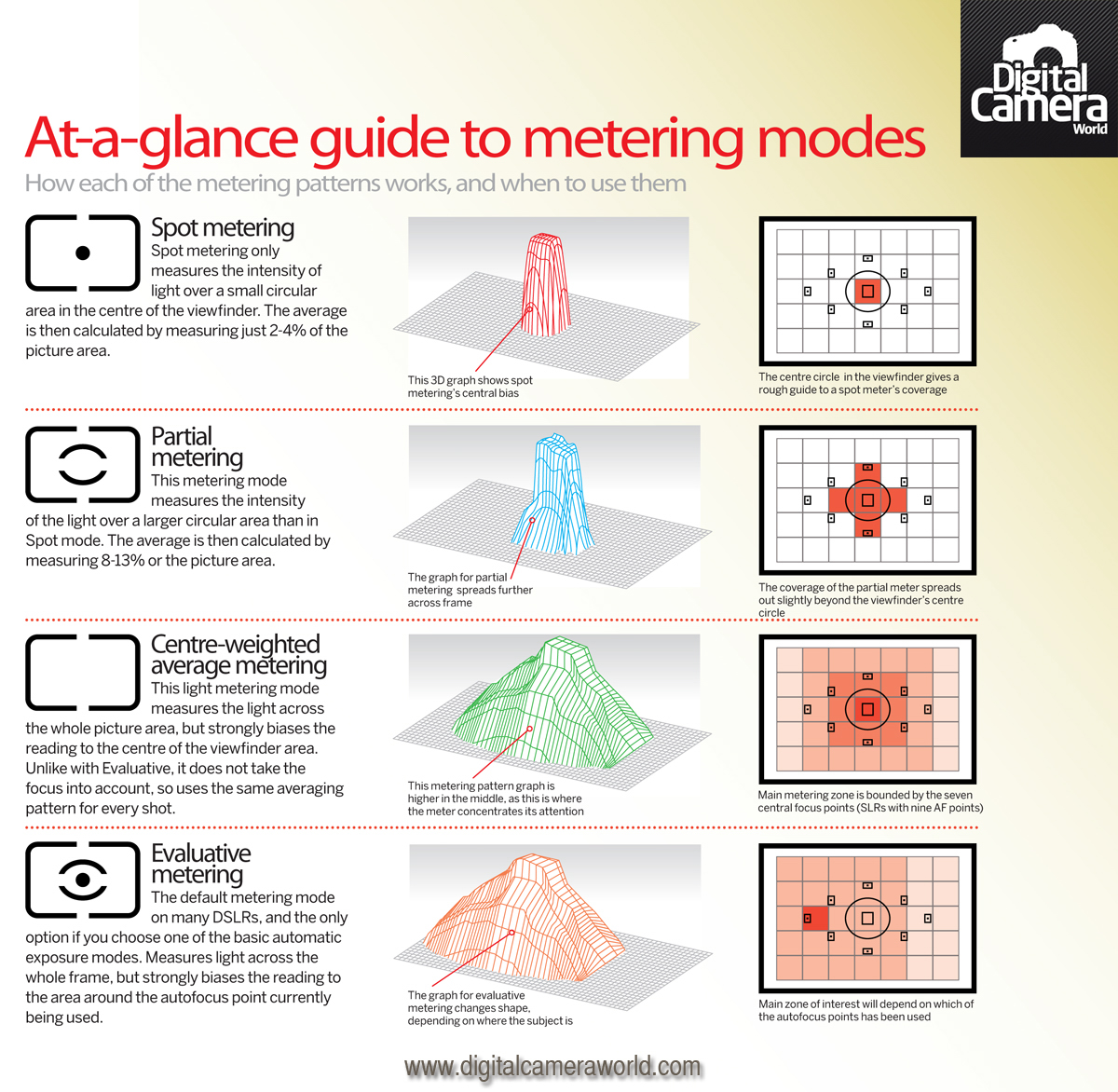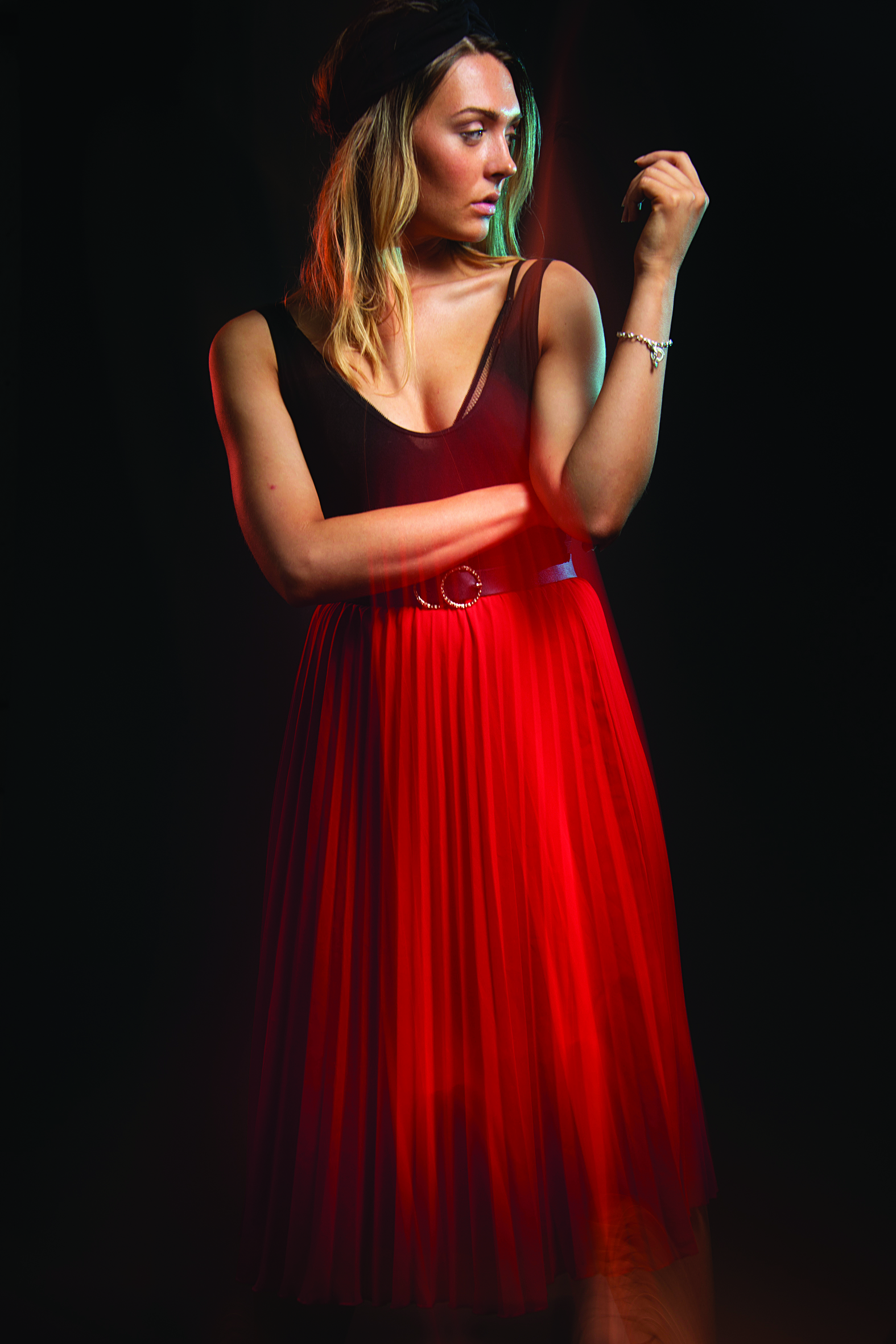What is spot metering, and when would you use it?
Spot metering is a very precise way of measuring the light, but it needs to be used with care

To get an acceptable exposure of a scene that is neither too bright nor too dark for your taste, some way of measuring the light that’s reflecting off the scene is needed. This measurement or ‘exposure value’ is then converted into a certain aperture value and a shutter speed at a particular ISO setting. But how is the light measurement made in the first place?
On DSLRs and mirrorless cameras, there are usually at least three ways of taking a light reading: Multi-pattern, Center-weighted, or Spot. The first is the most popular, and takes multiple light readings from all over the scene to work out what the most likely exposure value would be in average conditions. This is called different things by different manufacturers, but Canon’s ‘Evaluative’, Nikon’s ‘Matrix’ and Olympus’s ‘Digital ESP’ all follow the same idea of measuring light from multiple areas to arrive at the exposure settings.
But because a camera doesn’t know what you’re looking at or what mood you want in the picture, multi-pattern metering won’t always get it right, so after checking the results, you’ll often need to adjust it with exposure compensation to make the picture brighter or darker, and reshoot to get the look you want.
The second – center-weighted metering – is a traditional method that biases the light reading towards the centre of the frame. This is a throwback to the days of film, but as it can be fooled by bright or dark areas in the middle of the scene, it is arguably less reliable than multi-pattern metering.

Spot metering
The third method – spot-metering – is the most precise option available and allows the photographer to take a reading from a very specific area of a scene – generally the area under the active AF target point.
But you do need to exercise a little judgement. If this area is a midtone, and is in the same light as the rest of the scene, you will get an accurate exposure. If it’s brighter than a midtone, you will underexpose the shot, and if it’s darker than a midtone, you will overexpose the shot.
Spot metering allows you to bypass what the camera maker ‘thinks’ is the correct exposure, and make your own decisions, based on how you want your shot to look. But to use it effectively, you have to be good at identifying midtones.
Get the Digital Camera World Newsletter
The best camera deals, reviews, product advice, and unmissable photography news, direct to your inbox!
Typical spot metering situations
For most photographers, spot-metering is used in ‘difficult’ lighting conditions – like when shooting a shaded subject against a bright, sunlit background. If you spot meter from a midtone in the same shade as the subject’s face (say a midtone piece of clothing or a purpose-built grey card with average reflectance, then the brightness of the background will be ignored and bleached out, and a good exposure of the subject’s face will be the result.
In difficult lighting, spot-metering is much quicker to employ and more reliable than other hit-and-hope methods, and with practice, may become your go-to option.
With any metering method, it’s always a good idea to use it in conjunction with your camera’s Histogram display, as this will give you an objective, graphical overview of the distribution of tones in the scene.
Read more:
• Best hand held light meters
• Best cameras for beginners
• What is exposure compensation?
Andrew makes his living as a photographer, videographer and journalist. For 26 years he was a specialist magazine editor, the last 13 of which were on Practical Photography magazine. A long-time expert in photographic techniques across many disciplines, he's a self-confessed photo generalist, and a font of creative knowledge to capturing just about any subject, although he has a strong leaning to wildlife and travel photography. Andrew's wide-ranging photography experience means he authors the long-running Photo Answers section for Digital Camera Magazine. His work as a journalist, guide and educator dovetails neatly into his commitment to Foto-Buzz - an online subscription community he founded, where Andrew writes articles, films tutorials and records blogs on all manner of photo-related subjects and techniques for enthusiast photographers.

